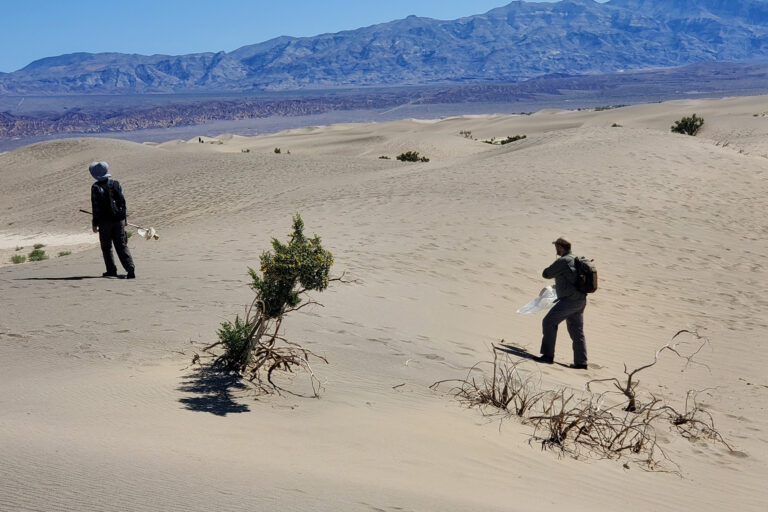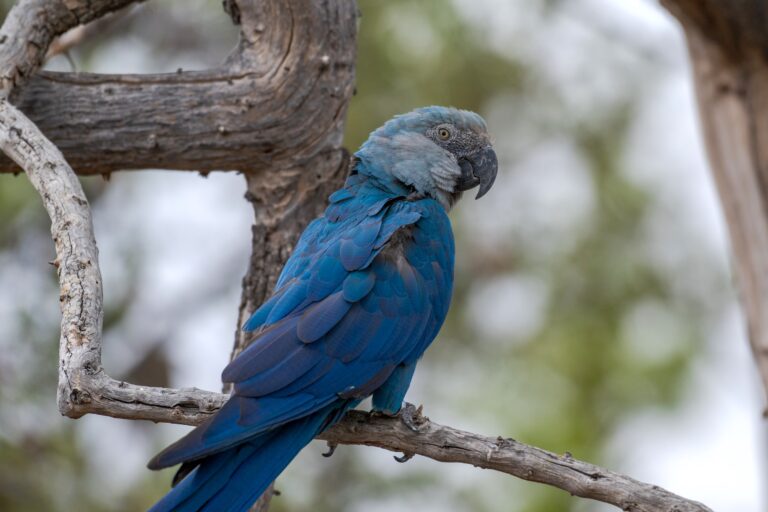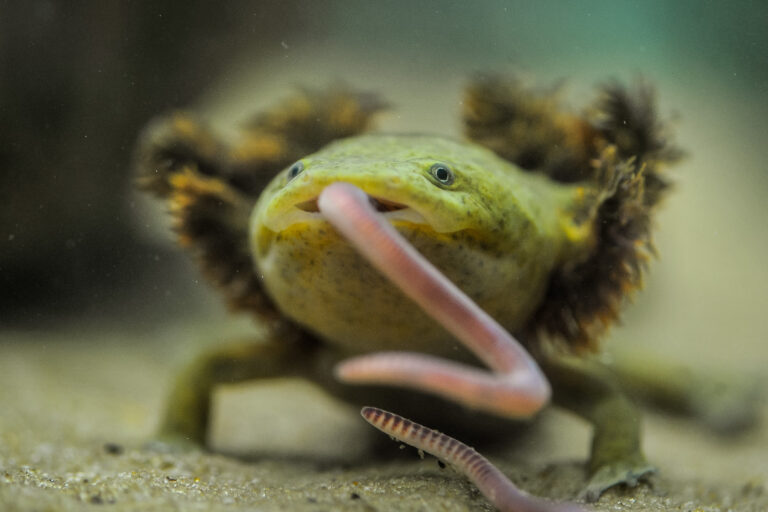- Grove’s Dwarf lemur (Cheirogaleus grovesi) was discovered in two of Madagascar’s national parks, Ranomafana and Andringitra, both of which are part of the Rainforests of Atsinanana UNESCO World Heritage Site.
- The new lemur is a nocturnal primate that is smaller than a squirrel. The fur on its back, limbs, and head are a reddish-brown in color, and there are brownish-black rings around its large eyes.
- The species was named for British-Australian biological anthropologist and primate taxonomist Colin Groves, who passed away last year.
Scientists have found a new species of dwarf lemur in southeastern Madagascar.
Grove’s Dwarf lemur (Cheirogaleus grovesi) was discovered in two national parks, Ranomafana and Andringitra, both of which are part of the Rainforests of Atsinanana UNESCO World Heritage Site. A team led by scientists at the Henry Doorly Zoo & Aquarium in Omaha, Nebraska described the species in a paper published this week in the journal Primate Conservation.
An analysis of DNA samples taken from a number of animals was used to confirm that Grove’s Dwarf lemur is in fact a new, distinct species.
The new lemur is a nocturnal primate that is smaller than a squirrel. The fur on its back, limbs, and head are a reddish-brown in color, and there are brownish-black rings around its large eyes.

Groves’ Dwarf lemur is the twenty-fourth lemur to be discovered by the Conservation Genetics Department headed by Dr. Edward Louis Jr. at the Henry Doorly Zoo. Scientists at Suny Polytechnic Institute in Utica, New York and two NGOs — Austin, TX-based NGO Global Wildlife Conservation and the Madagascar-based Madagascar Biodiversity Partnership — also helped make the discovery.
According to Russell Mittermeier, the Chief Conservation Officer at Global Wildlife Conservation and a study co-author, there are more such discoveries on the way. “This new species is one of several new dwarf lemurs in the genus Cheirogaleus that have been or are in the process of being described,” he told Mongabay. “It is indicative of how little we know about biodiversity in general, and even of our closest living relatives, the primates.”
Mittermeier said that, as recently as 1994, when he helped compile the first field guide to lemurs, there were just 50 species and subspecies of the primates, all of which are found on Madagascar. “With this new one, it is up to 112 — a doubling of known diversity in one of the world’s highest priority biodiversity hotspots, Madagascar, which has less than 10% of its natural vegetation remaining.”
The species was named for British-Australian biological anthropologist and primate taxonomist Colin Groves, who passed away last year. The team of researchers write in the Primate Conservation study that they named the species in honor of Groves to recognize “his more than forty years of work in the fields of primatology, evolutionary biology, morphological analysis, mammalian taxonomy and associated disciplines.” They add that, “At the time of his passing, Professor Groves was widely regarded as the greatest living primate taxonomist.”
“Fortunately, he saw the manuscript and knew we were doing this before he died,” Mittermeier said.

The researchers note that the conservation status of Grove’s Dwarf lemur is still undetermined, but the fact that it occurs in two national parks that are connected by a protected wildlife corridor could mean that it is less threatened than lemur species found outside of protected areas. However, they add that deforestation driven by human activities is occurring across Madagascar, and the protections granted to a national park do not always guarantee its safety. It’s also unknown if the new lemur is hunted by local communities for bushmeat, but the authors write that “this is certainly a possibility.”
Further research is required to determine the conservation status of Cheirogaleus grovesi “so that protective measures can be taken to ensure the future of the lineage,” the researchers write, while “The continuing identification of new primate species in Madagascar’s remaining wild places highlights the need to protect this habitat from additional disturbance by human encroachment.”
Mittermeier underscored the need for more conservation efforts by pointing out just how much habitat has been lost in Madagascar and the fact that lemurs are, on the whole, a rather threatened group.
“Given what Madagascar has lost in terms of natural vegetation, what remains amounts to little more than two or three New Jerseys in area,” he said. “And in this small area you have crammed fully 112 out of 703 known kinds of primates, making Madagascar by far the highest primate conservation priority on Earth. What is more, all of the 5 families, 15 genera, and 112 species and subspecies of lemurs are endemic to Madagascar and almost 90% are threatened (either Critically Endangered, Endangered or Vulnerable).”

CITATION
• McLain, A. T., Lei, R., Frasier, C. L., Taylor, J. M., Bailey, C. A., Robertson, B. A. D., Nash, S. D., Randriamanana, J. C., Mittermeier, R. A., & Louis Jr., E. E. (2017). A New Cheirogaleus (Cheirogaleidae: Cheirogaleus crossleyi Group) Species from Southeastern Madagascar. Primate Conservation 31, 27-36.














